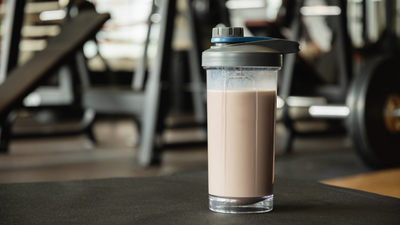ARTICLE AD BOX

A viral video promoted a homemade sattu shake over commercial protein powders, claiming preservatives linger in the body. However, scientific data refutes this, showing most powders are safe and preservatives are rapidly metabolized. While sattu and dry fruits offer nutrients, their health impact depends on individual goals and sugar content, urging a closer look at nutrition facts.
In one recent viral video a lifestyle coach talked about a homemade “sattu shake” (roasted gram flour mixed with milk and soaked dry fruits) as India’s ultimate protein drink. She claimed that commercial protein powders are full of preservatives that “stay in your body for six months,” whereas her traditional shake (with sattu, cashews, almonds, pistachios, raisins, etc.
) was far healthier. In reality, science and nutrition data tell a very different story. We break down these claims:
Myth: Protein powders leave preservatives in your body
The influencer’s warning about long‑lasting preservatives has no scientific basis. In fact, most high‑quality whey protein powders contain little or no added preservative, and any harmless preservative used (like benzoic acid or sodium benzoate) is rapidly metabolized and excreted by the body.
Regulatory agencies (FDA, EFSA, etc.) strictly limit additive use and consider them safe at approved levels.A Baylor University review notes that a typical whey powder may be up to 80% protein by weight; the remainder is usually lactose (milk sugar), fat, or natural flavoring. Preservatives, if present, are only a tiny fraction.Further, natural foods also contain benzoic acid, for example berries. Our bodies are well‑equipped to handle small amounts of these preservatives, whether from fruit or from a packaged powder.

What’s in a “sattu + dry fruit” shake?
The diet expert has touted her recipe (sattu flour + milk/water + nuts and raisins) as healthier.
These ingredients are indeed nutritious, but their macronutrient balance depends on quantities.Sattu (roasted gram flour) is high in protein and fiber. 100g of sattu yields about 26g protein and 60g carbohydrates (plus 18g fiber).Nuts (almonds, cashews, pistachios) are rich in healthy fats (mostly unsaturated), plus a moderate amount of protein and fiber. For example, a 28g handful of almonds has ~6g protein, 15g fat, 6g carbs (3g fiber); pistachios are similar (6g protein, 13g fat, 8g carbs per ounce); cashews offer about 5g protein, 12g fat, 9g carbs per ounce.

Raisins (kishmish) and any jaggery/dates mainly add natural sugars and calories, plus a bit of fiber and micronutrients. Raisins are fat-free and contain antioxidants and iron, but they are mostly carbohydrates (≈30g per 40g serving).
The caveat no one talks about
While all the above ingredients are considered healthy for most people, it fails to caution the people who have health complications or have different health goals.To gain weight (muscle or fat), you need a calorie surplus, routinely eating more calories than you burn.
Drinks can help add calories, but only if they’re energy-dense. Nutrition experts note that high-calorie smoothies or shakes, often containing healthy fats (like nut butter, avocado, or whole-fat dairy), can boost intake.

Conversely, someone trying to stay lean might prefer a lower-calorie shake. In that case, a shake with modest calories but high protein can help satiety.Furthermore, the drink in question also fails to nuance on the sugar content. Harvard Health notes some protein powders have up to 23 g of added sugar per scoop. Mixed with milk or juice, a single shake can contribute a huge sugar load.
The American Heart Association recommends no more than 24 g of added sugar per day for women (36 g for men). If one shake already has ~20 g added sugar, drinking it daily alone could max out those limits which in turn raises the risk for people with diabetes.In summary, a “healthy” ingredient list doesn’t guarantee a healthful effect for everyone. To get the whole picture, examine the shake’s nutrition facts:Is the per-serving protein enough to meaningfully contribute to your daily goal (RDA or higher if you train)?Does it provide the necessary energy (especially if weight gain is desired) or is it too low-calorie?How much added sugar? Does it exceed the AHA recommendations or fit into your total carb budget?And last but not the least, Are there additives or fillers (sweeteners, thickeners, artificial flavors) to consider? Even “natural” flavors can contribute carbs.

 12 hours ago
5
12 hours ago
5









 English (US) ·
English (US) ·